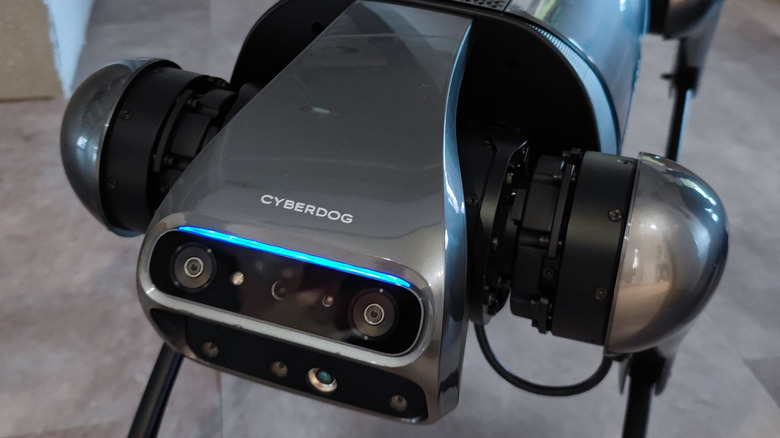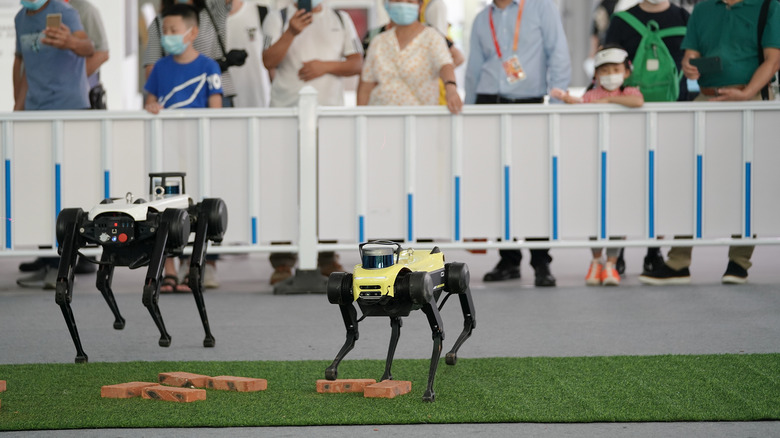The Large Robot That China Wants To Use Like A Yak
Pet ownership is tough. There's the constant need for organic nourishment, complex and imperfectly interactive behavior patterns, and a shameful lack of all-terrain load bearing capacity.
Honestly, it's enough to make even the most doting owner wish for a robotic yak.
China's first domestically built "yak" robot with a load capacity of 160 kg made its debut recently. The robot can deal with all sorts of road and weather conditions. pic.twitter.com/x1SPGzn04S
— People's Daily, China (@PDChina) January 14, 2022
In January, state-run Chinese media announced that very thing. Video footage reveals the largest quadrupedal robot built to date. The official description put Robo-Yak at "more than half as tall as an adult while walking, and its length is about two times its height," putting it at roughly four feet tall and between 10 and 15 feet long. It can reportedly carry over 350 pounds and navigate tough terrain with ease, including stairs, cliffs, mud, desert, and snow (via Global Times). Per the same source, the machine has a top speed just over six mph.
For readers still laughing at the idea of a robotic yak, read on. Believe it or not, this robotic beast of burden may just represent the engineering philosophy of the future.
Innovation starts when everyone stops laughing
As much fun as it is to tease Robo-Yak, in many ways it's the obvious next step in a series of important innovations. Autonomous and remote machines are widely agreed to be vital to the future of engineering. Drones, autonomous vehicles and AI control may get more American headlines, but there is a thriving and competitive market for machines that can perform simple, demanding tasks on the ground around the world. The best-known examples in the U.S. is probably the robots at Boston Dynamics, which DHL among others have already put to work. Chinese authorities have similar intentions for the yak. Its main applications include delivering important cargo over rough terrain and potentially serving as a ground-based military reconnaissance drone (via AutoEvolution).
Understood in those terms, the yak makes sense. Fundamentally, it's a classic piece of engineering oneupmanship: it's a bit bigger, a bit faster and carries larger loads than the biggest Boston Dynamics machine currently in production (via Futurism). In short, if you're interested in engineering an autonomous machine to drag heavy things over hard ground, you might be wise to start with a yak, which already does that, over a forklift that doesn't.
The replacement of beasts of burden with powered machinery changed global industry forever. Now, by looking back at beasts of burden, engineers may be about to change it again.

